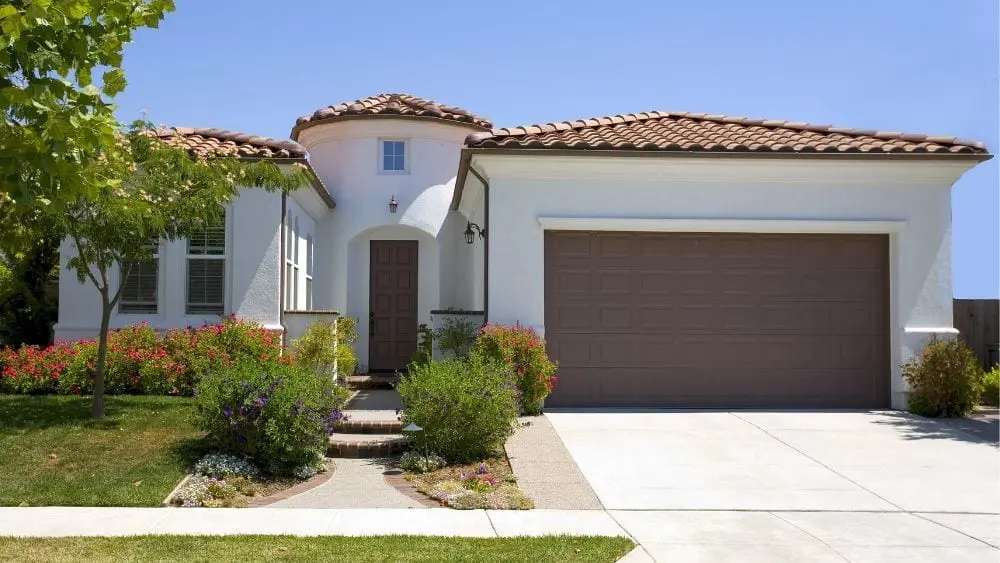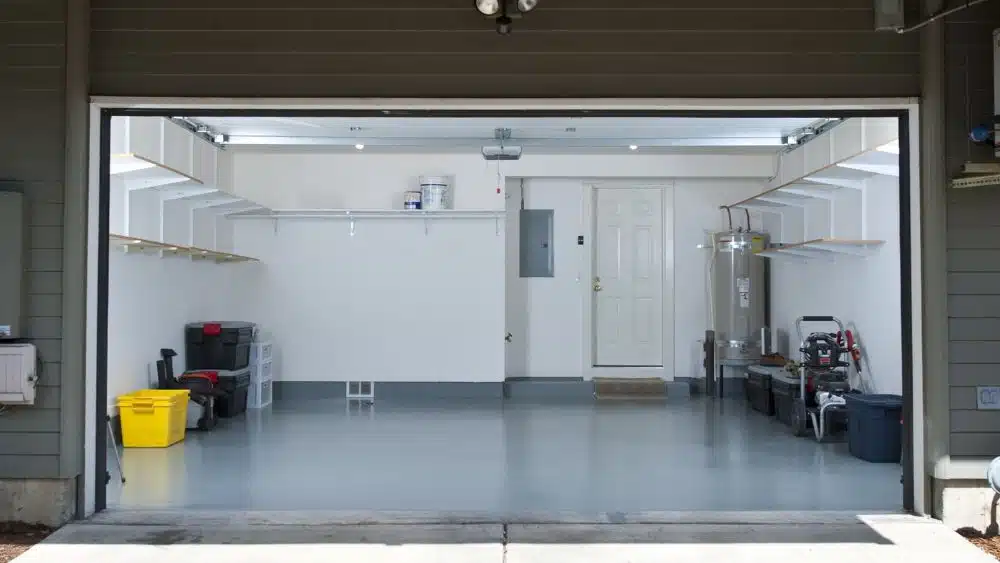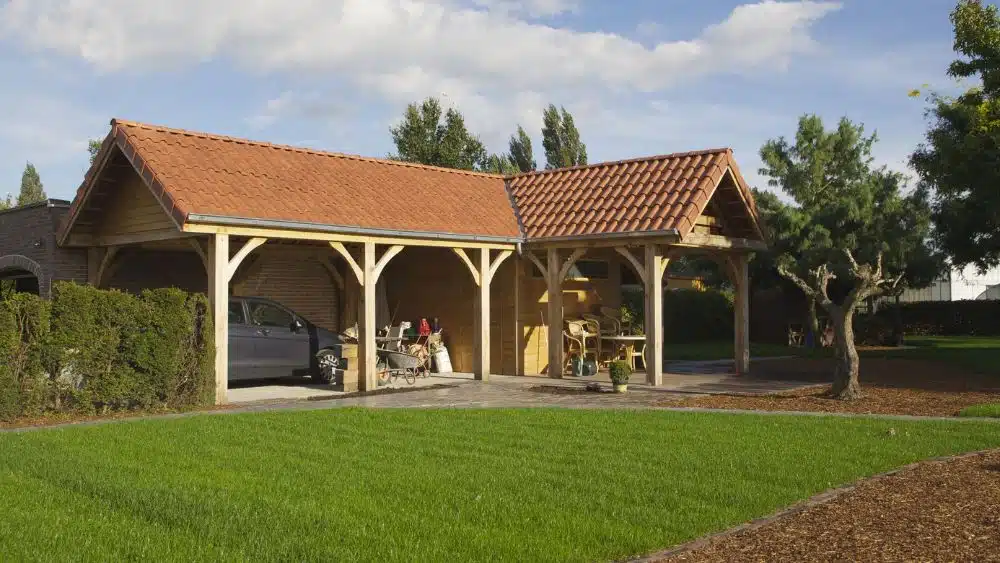
One of the joys of buying a newly built home is that you can personalize your home to meet your specific needs. But if your builder and community allow you to make changes to your home’s configuration, it can sometimes be a challenge to balance what you like with the style of the neighborhood. In addition, it’s smart to consider the future value of your home in case you want to sell it.
For some buyers of newly built homes, the decision about whether to have a garage, a carport, or neither is simple. If you have multiple cars or live in a climate with lots of snow or intense sun and heat, you probably want to keep your car covered for at least part of the year. But not every home comes with a garage or carport.
In 2021, 67 percent of newly built single-family homes included a two-car garage and 19 percent included a garage that could accommodate three or more cars. Only 7 percent of homes had no garage or carport, while 6 percent of newly built homes had a one-car garage and just 1 percent had a carport. The popularity of larger garages has declined steadily since 2015, when 24 percent of homes had a three-car garage or one that could accommodate more than three cars.
Home styles vary from one region to another, along with the propensity to have more space for cars. In 2021, three-car or larger garages were most common on newly built homes in the West North Central division of the U.S., while one-car garages were most popular in the Middle Atlantic division.
The Pacific region had the highest share of new homes with two-car garages at 77 percent; and New England had the largest share of homes (13 percent) in the “other” category, which includes carports, off-street parking, and other parking facilities.
While demand for three and four-car garages is waning, the trend toward walkable neighborhoods and the use of ridesharing apps has also contributed to less emphasis on a garage. Still, most buyers want a garage even if they don’t plan to use it for a car.
Carport vs. Garage
Before you can think about which type of structure you prefer for parking, you need to understand the difference between a carport and a garage.
Generally, a garage is a completely enclosed space with four walls, a ceiling, and a garage door, and can be attached or detached. Some garages also have a breezeway, which is an open walkway that connects the garage to the house but is covered to protect residents and guests from the weather.
In some cases, instead of a breezeway, you can have a carport accessible from the driveway next to the main garage to provide additional off-street parking. A carport typically has a metal or fabric roof attached to a metal frame that provides overhead protection for your car or truck. In some cases, a carport is attached on one side to your house for weather protection as you move from your car indoors.
Both a garage and a carport can be used for storage for items other than your vehicle, but a garage offers more security since items can be locked up out of sight.

Value of a Garage
While you may be moving into a neighborhood with plenty of parking and would rather have some extra outdoor space or an extra room in your house than a garage, it pays to think of resale value. In urban areas with limited parking and strict regulations, a garage can be extremely valuable and set your home apart from others. In many cities, homeowners who don’t need their garage rent it or even sell it for extra income.
Garages are just as important in rural areas, although not always for a car. Homes with a lot of land to maintain typically need equipment such as a lawnmower and other gear. If you don’t have a designated shed for this type of equipment, a garage is a prime spot for it.
Similarly, homeowners in rural locations often own outdoor recreation equipment such as kayaks, canoes, snowboards, skis, fishing poles, and mountain bikes. Your garage may be full even without a car.
You can also convert your garage to a permanent living space, which can be less costly than a ground-up addition. Or temporarily use the space as a gym, a home office, or an art studio with the ability to use it as a garage again in the future or when the house is sold.
HOA Rules and Garages
If you’re building a home in a community with a homeowner’s association, keep in mind that you need to follow the homeowner’s association’s (HOA) rules.
For example, in many HOAs, you may not be allowed to park your car on the street. You can also be limited to parking just one car in your driveway. In that case, you may want to opt for a two-car garage or even a larger one to accommodate your car, your partner’s car, your kid’s car, and any visitor’s car.
HOA rules sometimes require vans and other vehicles used for work to be parked out of view, in which case a garage is mandatory.

Why Choose a Carport
If you’re mostly looking for a little shelter from the weather for your car or truck, a carport can be the least costly and simplest solution. The location of a carport depends on the configuration of your home and your lot, so it can be behind or beside your house.
Climate is an important factor if you’re considering a carport. In areas with a lot of rain and heavy snowfall, a carport with a canvas roof may not be able to withstand the weather. You also need to be careful of high winds, since carports are less sturdy than a garage. If you live in a windy area, a carport made of steel with a metal roof is a good way to go.
Like a garage, a carport can be used for other functions. If you have hobbies or a side business that involves woodworking, painting, or messy activities, a carport can provide a place to work on these projects away from your house and under cover from rain or sun. A carport can even provide a nice shady place for kids to play or to entertain friends, especially if you place it somewhere with a nice view.
If you have a choice about whether to build a house with a garage, a carport, or neither, you’ll want to consider the weather in your area, what’s common in your neighborhood, your lifestyle, and potential resale value before you decide.

Michele Lerner is an award-winning freelance writer, editor and author who has been writing about real estate, personal finance and business topics for more than two decades.
 Best Places to Retire in Washington DC
Best Places to Retire in Washington DC